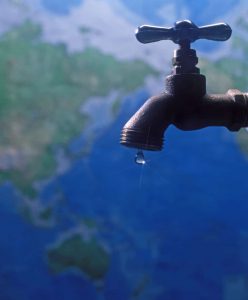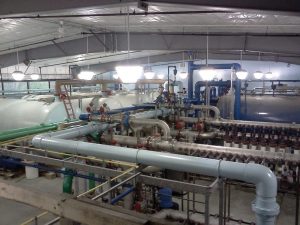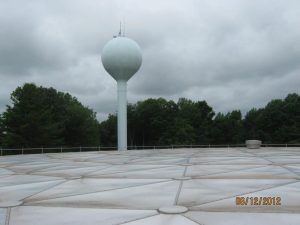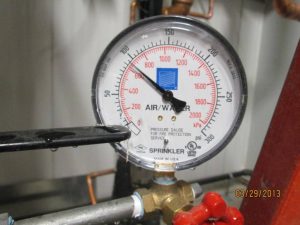From May 13-20, the seventh annual Infrastructure Week is taking place with the support of hundreds of affiliates across the country. Infrastructure Week was created to help raise awareness for our country’s growing infrastructure needs and stress the message that we must #BuildForTomorrow. Led by a coalition of businesses, labor organizations and policy organizations, this week will unite the public and private sector to send this important message to leaders in Washington and beyond.
No matter where you live, your age, your education, if you drive a car or a truck or take the bus or a bicycle, infrastructure has a profound impact on your daily life. We all have to get around. We all need lights to come on and water to come out of the tap.
Consequently, too much of our nation’s infrastructure is under-maintained, too old, and over capacity. When it comes to water infrastructure alone, we are dealing with a massive network of pipes that are well over 100 years old. In short, droughts in western states have caused wells and reservoirs to fall dangerously low; saltwater intrusion of Florida’s drinking water infrastructure, and dam and levee failures in California, South Carolina, and Louisiana have caused evacuations and put hundreds of thousands of people and homes at risk.
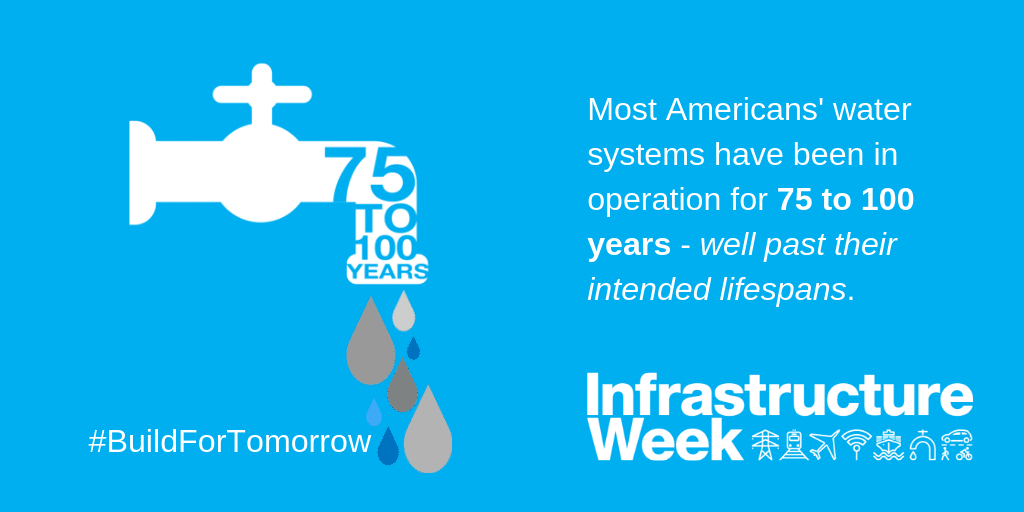
The High Cost of Water Infrastructure
And this is just the tip of the iceberg. A study conducted by the American Water Works Association revealed that the cost to replace our nation’s water infrastructures would cost more than one trillion dollars over the next 25 years.
No state, city, or county alone can tackle the growing backlog of projects of regional and national importance, and Americans get it: more than 79 percent of voters think it is extremely important for Congress and the White House to work together to invest in infrastructure.
For years, near-unanimous, bipartisan support for infrastructure investment has been steadily increasing. Leaders and voters have been rolling up their sleeves to spark efforts in the rebuilding and modernizing of transportation, water, and energy systems. Certainly, large strides have been made as a country, but there is still a lot to be done.
Every four years, the American Society of Civil Engineers (ASCE) publishes The Report Card for America’s Infrastructure, which grades the current state of the nation’s infrastructure on a scale between A and F. The last survey from 2017 gave tremendous insight into the state of our infrastructure surrounding drinking water, dams, and wastewater.
Drinking Water Infrastructure
The drinking water that we get in our homes and businesses all comes from about one million miles of pipes across the country. While the majority of those pipes were laid in the early to mid-20th century, many are showing signs of deterioration. There are many reasons for a water main to break including localized influences such as aggressive soil and weather conditions, as well as poor design/construction. Approximately 240,000 occur each year, consequently resulting in the waste of two trillion gallons of treated drinking water. Drinking Water received a grade of D.
Dams
The average age of the 90,000+ dams in the United States is 56. Nearly 16,000 (~17%) have been classified as high-hazard potential. Dam failures not only risk public safety, they also can cost our economy millions of dollars in damages as well as the impairment of many other infrastructure systems, such as roads, bridges, and water systems. As a result, emergency action plans (EAPs) for use in the event of a dam failure or other uncontrolled release of water are vital. As of 2015, 77% of dams have EAPs – up from 66% in the last 2013 Report Card. Dams received a grade of D.
Wastewater
There are approximately 15,000 wastewater treatment plants across the U.S that are critical for protecting public health and the environment. In the next 15 years, it is expected that there will be 56 million new users connected to the centralized treatment system. This need comes with an estimated $271 billion cost. Maintaining our nation’s wastewater infrastructure is imperative for the health and well being of the 76% of the country that rely on these plants for sanitary water. Wastewater received a grade of D+.
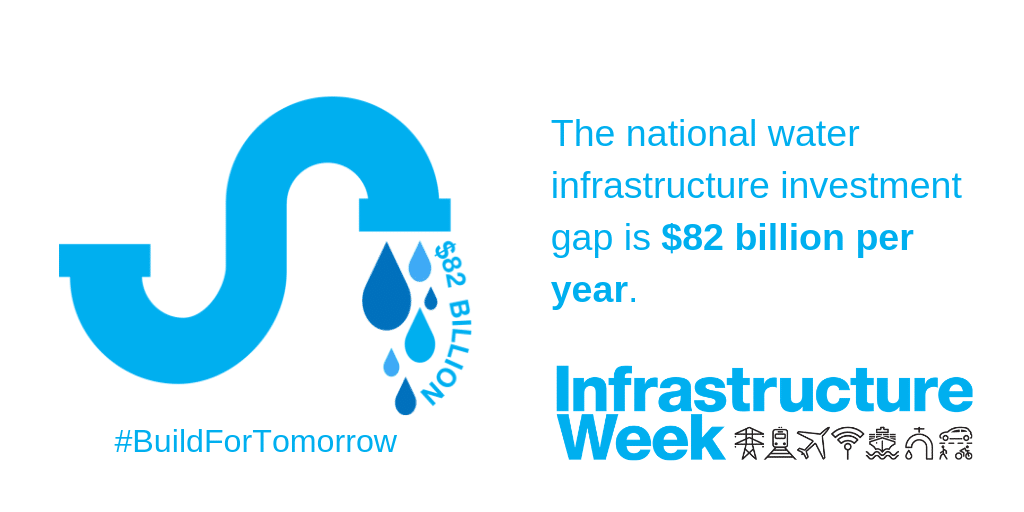
In the water sector alone, it’s clear how heavily we rely on solid infrastructure. If the issues in our nation’s water infrastructure are not addressed, millions of people as well as our environment will be at risk. Many communities around the country are working hard to deliver projects to solve these problems – but there is always more to be done. Reversing the trajectory after decades of under-investment requires transformative action from Congress, states, infrastructure owners, and the American people. Join us this week to help spotlight the continued advocacy and education of infrastructure needs. Afterall, this is the true foundation that connects our country’s communities, businesses, and people.


 Water systems today face a set of problems that are unique to this generation. While our nation’s buried infrastructure is crumbling beneath our feet as it reaches the end of its useful life, supplies are dwindling, budgets are shrinking, and federal and state funding is drying up. At the same time, regulatory requirements continue to increase as emerging contaminants are identified. Water systems often find themselves in the quandary of whether to upgrade treatment systems to comply with these new regulations or update assets that are long overdue for replacement or rehabilitation.
Water systems today face a set of problems that are unique to this generation. While our nation’s buried infrastructure is crumbling beneath our feet as it reaches the end of its useful life, supplies are dwindling, budgets are shrinking, and federal and state funding is drying up. At the same time, regulatory requirements continue to increase as emerging contaminants are identified. Water systems often find themselves in the quandary of whether to upgrade treatment systems to comply with these new regulations or update assets that are long overdue for replacement or rehabilitation. In addition to addressing capital efficiency, water utilities of today must also address operational efficiency. Because water systems are required to do so much with so little, efficiency in all aspects of water system management is critical. Tata & Howard appreciates the unique set of challenges faced by water systems today, and we have experts on staff who understand the inner workings of a water utility – and how to improve them.
In addition to addressing capital efficiency, water utilities of today must also address operational efficiency. Because water systems are required to do so much with so little, efficiency in all aspects of water system management is critical. Tata & Howard appreciates the unique set of challenges faced by water systems today, and we have experts on staff who understand the inner workings of a water utility – and how to improve them.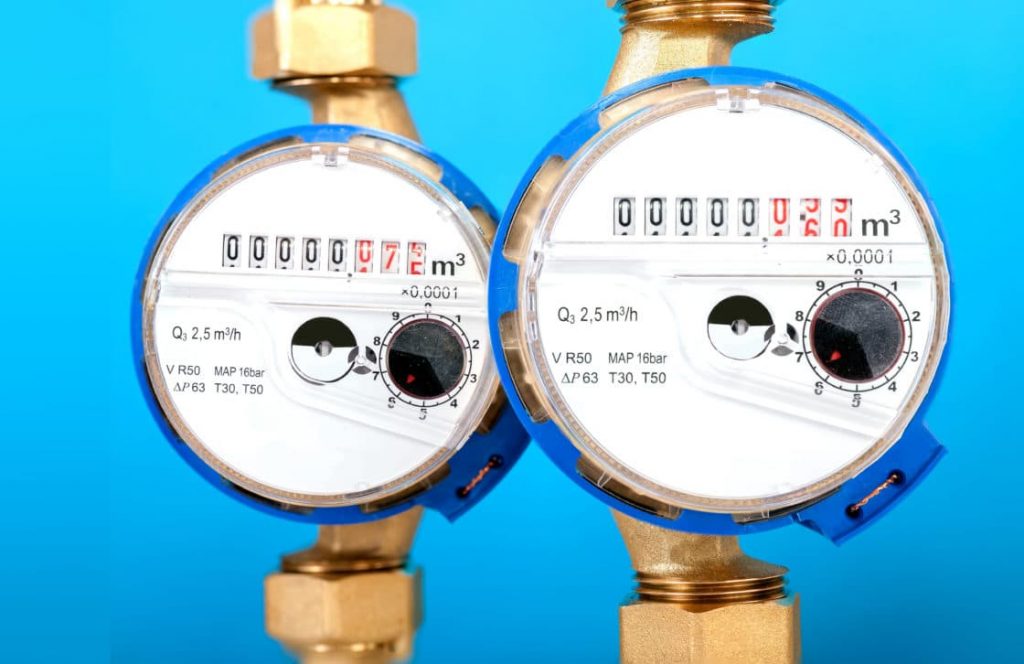 Besides improving operational and capital efficiency, water systems of today must reduce non-revenue water. Non-revenue water is treated drinking water that has been pumped but is lost before it ever reaches the customer, either through real losses such as leaks, or through apparent losses such as theft or metering issues. In the United States, water utilities lose about 20% of their supply to non-revenue water. Non-revenue water not only affects the financial health of water systems, but also contributes to our nation’s decreasing water supply. In fact, the amount of water “lost” over the course of a year is enough to supply the entire State of California for that same year. Therefore, the AWWA recommends that every water system conduct an annual water audit using M36: Water Audits and Loss Control methodology to accurately account for real and apparent losses.
Besides improving operational and capital efficiency, water systems of today must reduce non-revenue water. Non-revenue water is treated drinking water that has been pumped but is lost before it ever reaches the customer, either through real losses such as leaks, or through apparent losses such as theft or metering issues. In the United States, water utilities lose about 20% of their supply to non-revenue water. Non-revenue water not only affects the financial health of water systems, but also contributes to our nation’s decreasing water supply. In fact, the amount of water “lost” over the course of a year is enough to supply the entire State of California for that same year. Therefore, the AWWA recommends that every water system conduct an annual water audit using M36: Water Audits and Loss Control methodology to accurately account for real and apparent losses.